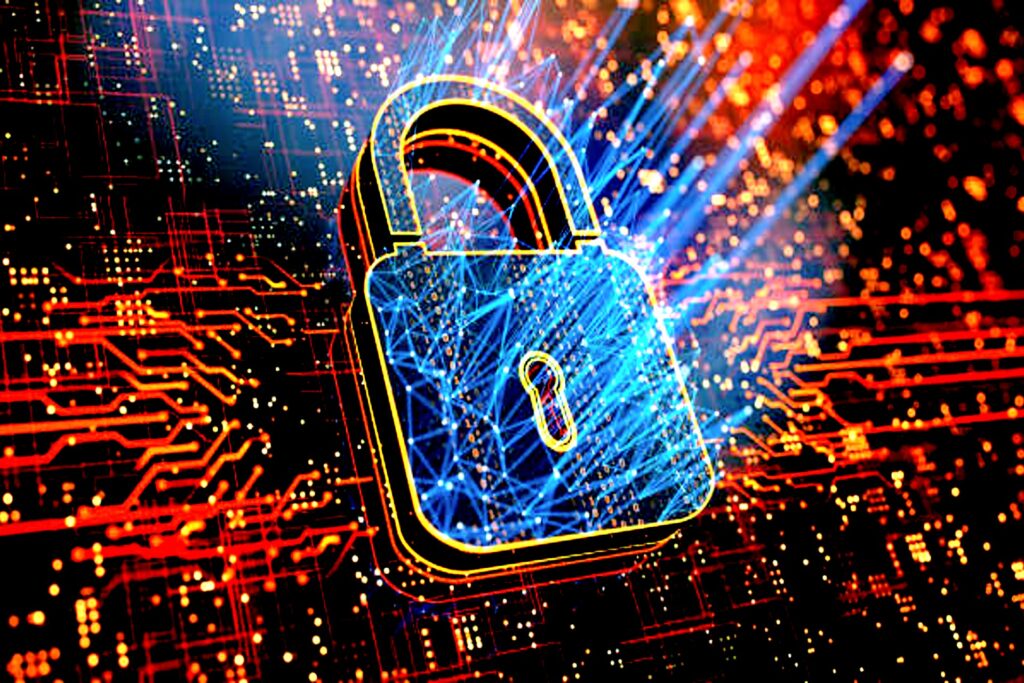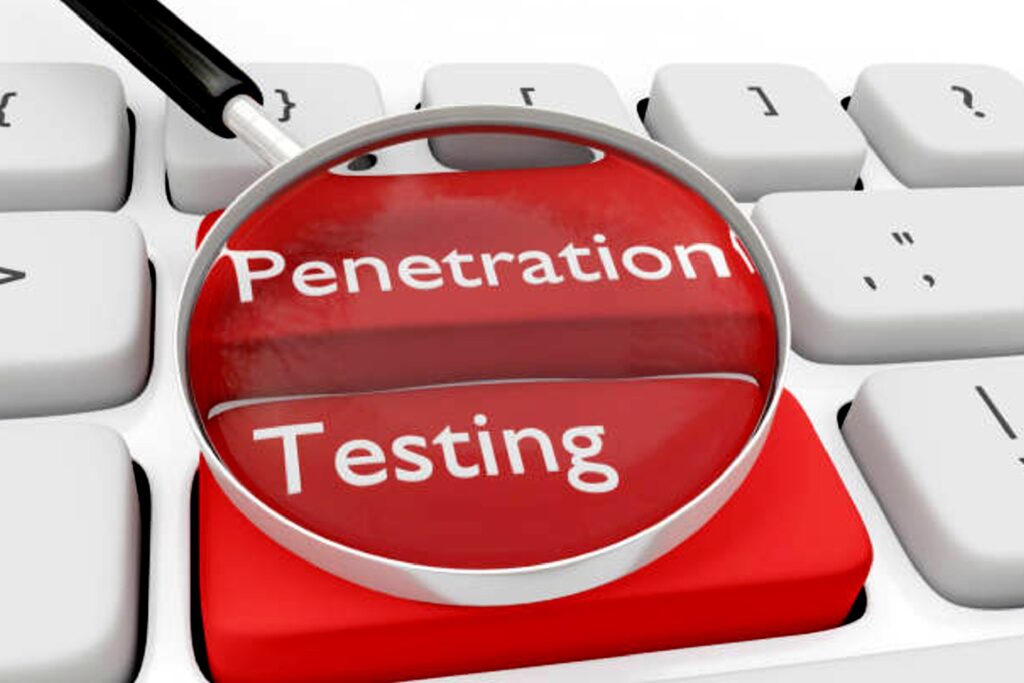The Internet of Things, IoT is an interconnected network of physical devices. Interconnected sensors and software link vehicles, buildings, and other objects. These connectivity enables them to collect and exchange data.
IoT devices are transforming various aspects of our lives. For example, the healthcare, transportation industry, manufacturing, and smart cities are all connected. This allows for increased efficiency, automation, and data collection, resulting in improved decision-making and cost savings.
Some examples of IoT applications include smart home devices, connected cars, and industrial internet systems. The possibilities of Internet of Things are vast and continue to evolve as technology advances.
What is IoT?
Internet of Things is a network of physical devices. Internet-enabled IoT devices can communicate with each other. Examples are smartphones, tablets, and computers. Devices collect data to automate processes and enhance decision-making. IoT applications include:
- Control smart home devices such as thermostats, security systems, and lighting remotely using a smartphone or tablet.
- Connected cars that can provide information on traffic conditions, fuel efficiency, and maintenance needs.
- Industrial internet systems that can optimize manufacturing processes and supply chain management.
- Healthcare IoT devices such as wearable fitness trackers, and medical devices that can monitor vital signs and send data to healthcare providers.
- IoT devices in Smart Cities optimize public services and improve citizens’ quality of life with data. For example, transportation, energy management, and waste management.
The possibilities of the IoT are vast and continue to evolve as technology advances. The IoT has the potential to revolutionize the way we live, work and communicate with each other, by connecting more devices, machines and people to the Internet, making them more intelligent and autonomous, and creating new opportunities for innovation and growth.
How IoT change the way we live
The Internet of Things is revolutionizing the way we live. Connected devices, such as smart home systems, allow for remote control of appliances and security.
It is enabling us to control and monitor our homes from anywhere, at any time. With smart home systems, we can easily adjust lighting, temperature, and even lock and unlock doors remotely.
Furthermore, it also allows us to monitor our home security and receive alerts if there are any suspicious activity. This gives us peace of mind when we’re away from home.
IoT-enabled cars offer improved safety features and navigation capabilities. Sensors and cameras in these cars detect road hazards and alert drivers.
They also feature advanced driver assistance systems (ADAS). This alerts with lane departure warning, automatic emergency braking, and adaptive cruise control, which help to prevent accidents.
IoT-enabled cars also have GPS and real-time traffic data. This helps you to optimize your route and make your journey more efficient and less stressful.
They also have the ability to connect to other devices. For example, smartphones, allowing for hands-free control and access to music, contacts and messages, and other features.
Industrial internet systems use IoT technology to optimize manufacturing and supply chain management processes.
These systems use sensors and connected devices to gather data on production processes, equipment performance, and inventory levels.
This data is then analyzed to identify inefficiencies and areas for improvement. With this information, manufacturers can make better-informed decisions, improve production processes, and reduce waste.
Additionally, IoT technology also enables real-time monitoring and tracking of products throughout the supply chain, allowing for more efficient and effective logistics management.
This can ultimately lead to cost savings and increase in productivity for the company.
Wearable devices
IoT devices are wearable and can provide personal health tracking and monitoring. They collect data on various health metrics such as heart rate, sleep patterns, and physical activity.
They also analyze data for insights into an individual’s health and well-being. Wearable devices can connect to other devices and apps. A typical example are smartphones which can provide additional functionality and analysis.
Wearable devices, connected with a mobile app, track food intake and offer personalized nutrition recommendations.
These devices are not only convenient but also empower users to take control of their health by providing real-time insights. Thus helping to identify potential health issues, and providing the opportunity to make lifestyle changes. This in turn can help improve overall health and well-being.
Smart cities and IoT
IoT devices are making cities smart for better connectivity. The IoT technology application improving transportation and energy management systems. It is also making cities more efficient, sustainable, and livable.
IoT-enable devices like traffic sensors, cameras, and parking management systems. They are use to optimize traffic flow, reduce congestion, and ensure efficient.
In addition, smart energy management systems are using IoT to monitor and control energy consumption in buildings, reducing waste and lowering energy costs. They can link systems to renewable energy sources, such as optimizing solar and wind power for clean energy.
By using IoT technology, smart cities can improve the quality of life for citizens while also reducing the environmental impact of urban areas.
IoT and decision-making
The IoT does improves decision-making with its data collection and analysis. The good thing is, this could be real-time data collection and analysis.
These IoT devices are smart. They can gather data on environment, processes, and equipment performance. IoT devices and systems analyze data for patterns and trends, for improvement opportunities. It uses data to make informed decisions, optimize processes, and increase efficiency. IoT has great ability to collect and analyze data in real-time.
It also allows for faster problem-solving and better effective decision-making. This help organizations to stay ahead of the curve and stay competitive.
IoT systems can integrate with AI algorithms to form intelligent systems. This can make decisions autonomous to further increase efficiency and thus reducing human errors.
Cost savings and automation with IoT
Cost savings and automation also result from IoT implementation. IoT implementation leads to cost savings and automation by streamlining processes and reducing waste.
By collecting and analyzing data in real-time, IoT systems can identify inefficiencies and areas for improvement. This allow organizations to optimize their operations. It can can also lead to reduced costs and increased efficiency.
In addition, automation also allows for 24/7 monitoring and control of processes, which further increasing efficiency and productivity. Implementing IoT technology can ultimately result in significant cost savings and increased revenue for businesses.
IoT Opportunities
The possibilities of IoT continue to expand as technology advances and new applications are developed. IoT has the potential to revolutionize various industries such as healthcare, transportation, manufacturing, and smart cities.
Advancements in fields like artificial intelligence, machine learning, and 5G networks will enable the IoT to become more intelligent, autonomous, and connected.
IoT gets added security and reliability through integration with blockchain technology. For now, this still a work in progress. The possibilities of IoT are endless and continue to evolve, creating new opportunities for innovation and growth.
Companies, governments, and individuals will continue to explore and implement IoT solutions to improve efficiency, reduce costs, and enhance their operations.
Effects of IoT Benefits
As technology advances, Internet f o Things will shape the future of how we live and interact with the world. IoT technology has the potential to make our lives more convenient, efficient, and connected, with new applications and possibilities emerging every day.
In the future, IoT technology will become more sophisticated, allowing for increased automation, real-time monitoring, and improved decision-making.
The integration of IoT with other technologies such as artificial intelligence, machine learning, and blockchain will further enhance its capabilities, making it more secure and reliable.
IoT will continue to transform various industries and sectors, creating new opportunities for innovation and growth.
Ultimately, IoT will play a significant role in shaping the future of how we live and interact with the world, making it more connected, intelligent and efficient.
It’s an exciting time to be a part of this technological advancement. Right now, we can see how it will continue to transform our lives for the better. Overall, IoT is making our lives more convenient, efficient, and infinitely connected.
Examples of Internet of Things in Workplace
IoT (Internet of Things) in the workplace refers to the use of connected devices and sensors to gather data and automate tasks. Some examples include:
- Smart lighting systems that automatically adjust to optimize energy efficiency
- Smart HVAC systems that can be controlled remotely to adjust temperature and humidity
- Smart security cameras and door locks that can be accessed and controlled remotely
- Smart inventory management systems that automatically track stock levels and reorder products as needed
- Smart office equipment such as printers and copiers that can be monitored and controlled remotely to optimize performance and reduce maintenance costs
Impact of Internet on Things in our Lives
The Internet of Things, IoT has revolutionized the way we live our lives by connecting everyday objects to the internet. IoT devices like smart home systems, wearable technology, and connected vehicles have made our lives more convenient and efficient.
Smart homes equipped with IoT devices allow us to control lighting, security systems, and heating remotely with a phone or tablet. Wearable devices like fitness trackers and smartwatches track our health and provide personalized recommendations. Connected vehicles equipped with sensors and cameras enhance road safety and provide real-time traffic updates.
IoT has also improved our daily routines by providing data-driven insights into our health and wellness. For example, wearable devices can track food intake and provide personalized nutrition recommendations. IoT-enabled systems can also be integrated with renewable energy sources to optimize clean energy usage.
In addition to the convenience and efficiency IoT brings, it also provides opportunities for innovation and growth. IoT data can be analyzed to identify patterns, trends, and areas for improvement, which is then used to make more informed decisions and optimize processes. IoT can also be integrated with artificial intelligence algorithms to create intelligent systems.
However, with the benefits come potential security and privacy concerns. Connecting everyday objects to the internet increases the risk of cyber attacks, making it essential to secure IoT devices and systems. Despite the challenges, IoT continues to impact our lives in a positive way and the potential for growth and innovation is limitless.
The Internet of Things has the potential to greatly impact our lives in a number of ways. Some of the most significant impacts include:
Increased Efficiency
IoT devices and systems can automate many tasks and processes, which can lead to increased efficiency and productivity in various industries such as manufacturing, transportation, and healthcare.
Improved Quality of Life
IoT devices can be used to monitor and improve various aspects of our lives, such as personal fitness and health, home security, and energy consumption.
Better Decision Making
IoT devices can collect and analyze vast amounts of data, which can be used to make more informed decisions in various industries such as agriculture, retail, and finance.
New Business Models
IoT technology is enabling new business models, such as the usage based pricing and predictive maintenance.
Connectivity
IoT devices can connect and communicate with each other, enabling new levels of automation and control in our homes, businesses, and cities.
However, there are also potential negative impacts of IoT, such as privacy concerns, security risks, and the potential for job loss due to automation.
using internet of things to ease our lives
There are many ways that the Internet of Things can be used to make our lives easier. Here are a few examples:
- Smart home automation: IoT devices such as smart thermostats, lighting, and security systems can be controlled remotely using a smartphone or tablet, allowing you to adjust the temperature, turn lights on and off, and monitor your home for intruders from anywhere.
- Health and fitness: IoT devices such as fitness trackers, smart watches and other wearables can help individuals monitor their physical activity, sleep patterns, and vital signs, allowing them to make healthier lifestyle choices.
- Transportation: IoT-enabled cars, buses and trains can share data, which can help to reduce traffic congestion and make transportation more efficient.
- Smart energy management: IoT devices can be used to monitor and control energy consumption, allowing homeowners and businesses to reduce their energy costs.
- Smart agriculture: IoT devices can be used to monitor soil and weather conditions, track livestock, and optimize crop yields, which can help to increase efficiency and reduce waste in the agriculture industry.
- Personalized shopping experience: IoT devices can be used to track customer behavior and preferences, which can help to personalize the shopping experience and make recommendations to customers.
does internet of things really improve our lives?
The internet of things, IoT is a big idea that means connecting everyday things to the internet. This can include things like your fridge, your thermostat, and even your car. Internet connection enables communication and remote control of things by phone, abilities they lacked before.
Many believe that Internet f o Things can make our lives better. For example, connected devices like fridges and thermostats can provide real-time updates and remote control from your phone.
On the other hand, some people think that Internet f o Things might not be such a good idea. Hacking risk exists when fridges and thermostats are connected to the internet. This devices can be accessed by unauthorized parties to see contents or alter settings.
In all, the Internet of Things has the potential to make our lives easier and more convenient. However, it also raises important security and privacy concerns. It’s important to be aware of the risks and take steps to protect your devices and personal information.
How does embedded computers and the Internet of Things impacted your daily life?
Embedded computers are in everyday items such as phones, cars, and appliances. They make these things smarter and can do more than they could before.
The Internet of Things connect embedded computers to the internet, enabling communication and remote control from a phone or computer.
Embedded computers and the Internet of Things have impacted our daily life in many ways. For example, you can use your phone to control your lights and thermostat at home. You can also use it to check on your home when you’re away, using cameras and other devices.
In the car, embedded computers help make driving safer by warning you when you’re getting too close to another car or when you’re about to run a red light. They also help cars become more fuel-efficient and reduce emissions.
In the kitchen, embedded computers make cooking easier by telling you when your food is ready and can also help you cook it perfectly. They can also help you keep track of what food you have in your fridge and when it will expire.
Overall, embedded computers and the Internet of Things have made our lives more convenient, safer and efficient. They can help us save energy, reduce waste and make our homes and cars smarter. But as with any technology, it is important to keep them secure and protect personal information.
Internet of Things impact on Society
The internet of things is a big idea that means connecting everyday things to the internet. This can include things like your phone, your car, and even your home. IoT can communicate and be controlled by a phone, abilities they lacked before.
IoT has an impact on many areas of our life. For example, it can make our homes smarter. We can control lights, thermostat, and other appliances from our phone or voice commands. This can save energy and make our home more comfortable.
In transportation, IoT can make cars safer by warning drivers of potential dangers and helping them avoid accidents. It can also make cars more efficient by giving drivers real-time traffic information and helping them find the quickest route.
IoT also has an impact on healthcare. They help doctors track patients’ health by sending data from wearable devices. This enables them make better decisions about treatment and care. Internet f o Things optimizes industry processes, reduces downtime and increases productivity through data collection and analysis.
Overall, Internet f o Things has a big impact on many areas of our lives. It has made them more convenient, efficient and safer. But, you must secure your devices and personal information to protect you from potential risks when using IoT technology.
your takeaway
The Internet of Things, IoT is a big idea that connects everyday things to the internet. It facilitates communication and remote control of cars, buildings, etc. from a phone or computer. They have sensors, which helps them to collect and share information.
Internet of Things is changing many parts of our lives. They make our homes smarter, cars safer and factories more efficient. In addition, they help doctors to keep track of patients’ health and cities to manage resources like traffic and parking.
There are many layers of IoT in our everyday lives as technology advances. But it is equally important to keep our devices and personal information secure to protect ourselves from potential risks.




